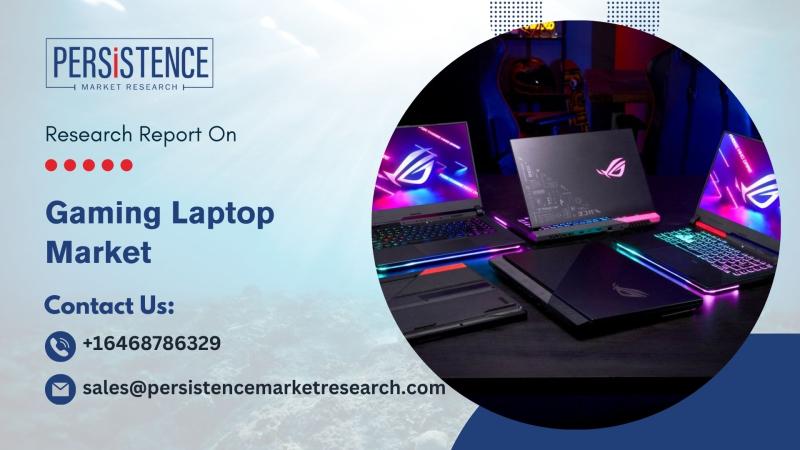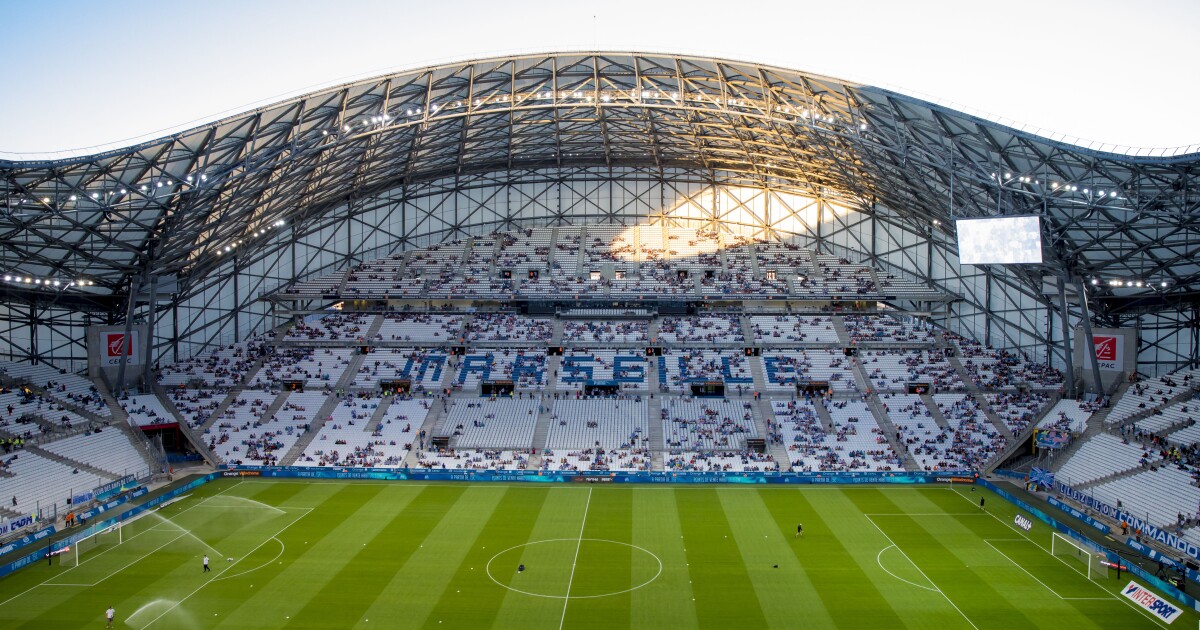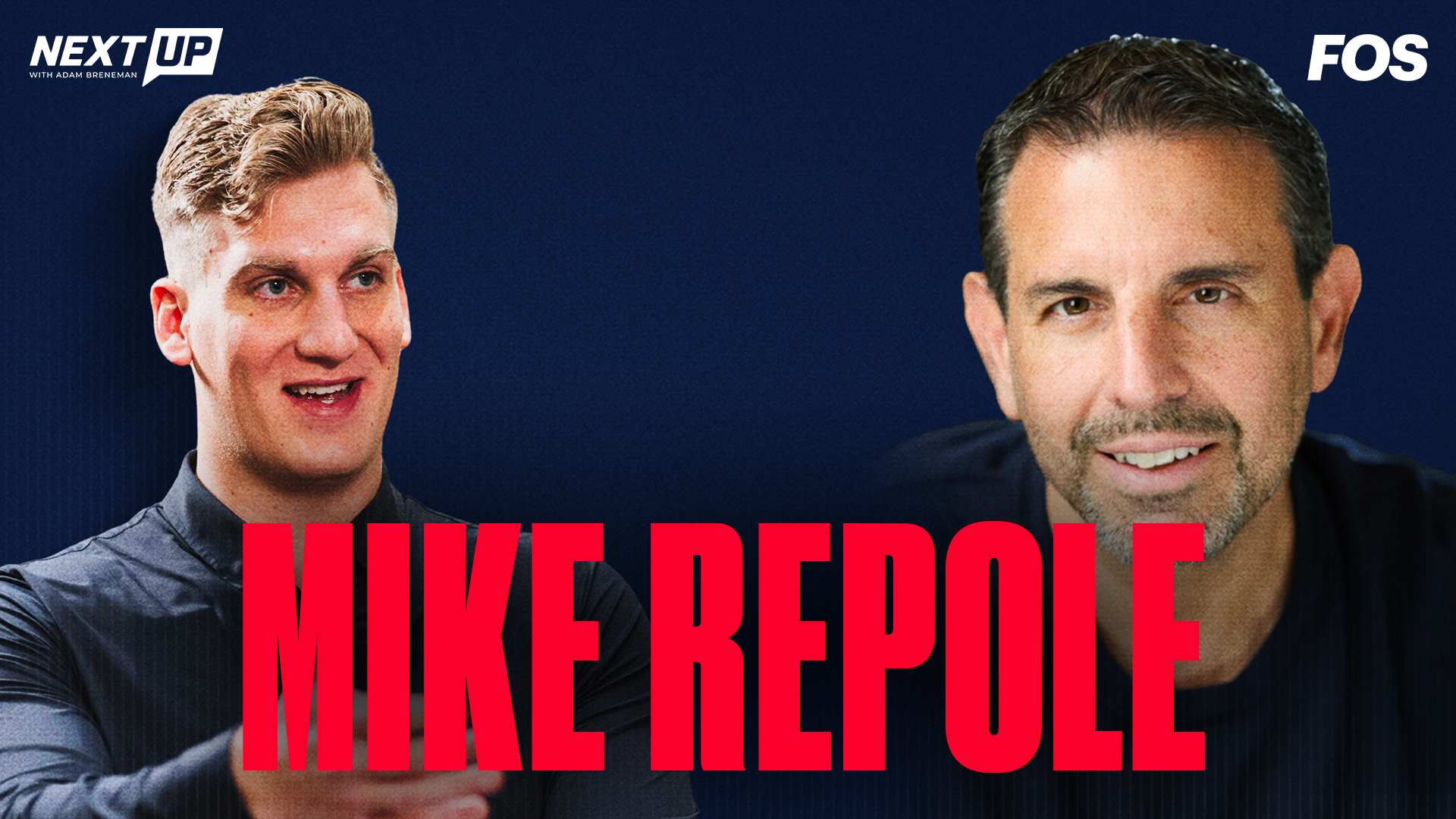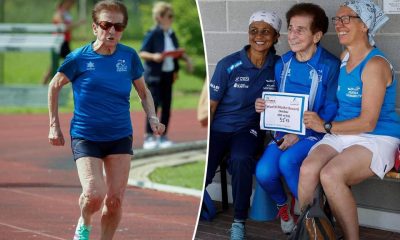Technology
Exploring the future – Sports in 2025 unveiled
The sports landscape in 2025 promises a fascinating amalgamation of tradition and technology, setting the stage for a pivotal year in sports worldwide. The planet will buzz with exhilarating competitions, including renowned multi-sport events such as the World Games in Chengdu and the Women’s Rugby World Cup in England. With no Olympics on the horizon […]

The sports landscape in 2025 promises a fascinating amalgamation of tradition and technology, setting the stage for a pivotal year in sports worldwide. The planet will buzz with exhilarating competitions, including renowned multi-sport events such as the World Games in Chengdu and the Women’s Rugby World Cup in England. With no Olympics on the horizon this year, the focus shifts to a diverse array of international events, showcasing the global sporting spirit and fostering international camaraderie. Amidst this thrilling sports panorama, women’s sports will particularly ascend, capturing increased attention and fostering gender equality. Simultaneously, innovations in sports technology and streaming are poised to redefine how fans engage with their beloved games, offering more immersive and personalized experiences. Furthermore, the impact of sports extends beyond the arenas, influencing diverse communities and driving toward inclusivity and empowerment, particularly through initiatives like the National Girls & Women in Sports Day. This multifaceted evolution in sports during 2025 is not just a glimpse into athletic excellence but also an insight into how sports can effectively bridge different cultures and societal norms.
Multi- Sport events – A global sporting extravaganza
2025 marks a significant year for global sporting events, with a plethora of competitions taking center stage. These events embody a celebration of international sportsmanship and athletic prowess. Major events such as the World Games in Chengdu offer athletes a platform to excel across a wide variety of disciplines, highlighting the integration of less-publicized sports into the global consciousness. This year also sees the spotlight on women’s sports with the Women’s Rugby World Cup in England and the Women’s Cricket World Cup in India. These prestigious competitions underscore the increasing prominence of female athletes, marking 2025 as a landmark for gender equality in sports. The breadth and scope of these events are further strengthened by local and regional competitions that contribute to a memorable sporting calendar, enhancing cultural exchange and global harmony.
Women’s sports – A pivotal moment for equality
The growth trajectory of women’s sports in 2025 reflects significant strides toward equality and representation. This year celebrates outstanding women athletes across various disciplines, catalyzing social change and breaking stereotypes. Major tournaments like the Women’s Rugby and Cricket World Cups position women at the forefront of global sporting narratives, earning admiration and support from diverse audiences. Moreover, initiatives like National Girls & Women in Sports Day reinforce the importance of participation and visibility for women in sports, encouraging new generations to engage, compete, and excel. These events and initiatives play a crucial role in reshaping societal perceptions and fostering enhanced investment in women’s sports sectors, further illustrating 2025 as a year of transformation and empowerment.
Technological advances and investment in sports
2025 witnesses far-reaching technological advancements in the sports arena, fundamentally altering how sports are experienced and consumed. Innovations in data analytics and artificial intelligence enable teams and organizations to refine strategies and engage audiences in unprecedented ways. Technology plays a crucial role in offering fans immersive experiences, transforming traditional media consumption with advanced streaming services that personalize viewing pleasures. Moreover, sports technology fosters smarter investments, leveraging data-driven insights that drive sponsorships and partnerships. This digital evolution not only enhances fan engagement but also opens new avenues for monetization and expansion, supporting the ever-growing demand for engaging, on-demand sports content.
Streaming and broadcasting – The new frontier
The shift toward sports streaming and broadcasting in 2025 represents a pivotal chapter in sports media. As fans increasingly seek instantaneous access to live games and sports content, traditional broadcasting is adapting, giving rise to more dynamic streaming platforms. Companies are investing heavily in technology to deliver high-quality, real-time sports experiences, thereby expanding their reach and fan base. Streaming services provide diversified content options, catering to niche audiences and enhancing global accessibility to sports events. The integration of AI and other cutting-edge technologies further enriches viewer engagement, offering real-time analytics, personalized content, and interactive features. This transformation ensures that the sports media industry remains vibrant and competitive, prepared to meet the demands of modern sports enthusiasts.
In conclusion, sports in 2025 present an intricate tapestry of traditional competitions and modern innovation. The year promises a remarkable elevation in women’s sports prominence, dynamic technological proliferation, and transformative media landscapes. These elements together shape a compelling narrative of sports as a unifying and progressive force in society. Amidst these developments, entities like Fast payout gambling sites continue to provide engaging platforms for fans seeking faster and more interactive ways to enjoy sports-driven entertainment. This comprehensive weave of events and innovations heralds an exciting era for sports fans around the globe, reflecting the undying human spirit to compete, collaborate, and celebrate through sports.
Technology
CapTech boosting the PGA Championship at Quail Hollow
Happy Friday! Keep an eye out in next week’s magazine for the debut of our monthly women’s sports column, which is part of our well-rounded effort to cover that sector of the sports with our industry-leading expertise. Have a great weekend. — Ethan Joyce In today’s edition of Power Up: CapTech enhances PGA Championship app […]

Happy Friday! Keep an eye out in next week’s magazine for the debut of our monthly women’s sports column, which is part of our well-rounded effort to cover that sector of the sports with our industry-leading expertise. Have a great weekend. — Ethan Joyce
In today’s edition of Power Up:
- CapTech enhances PGA Championship app
- Future of Sport Lab names latest cohort
- MLS, Apple expand free offerings

The PGA Championship has added further enhancements to its tournament app this week through its technology partner, CapTech.
For last year’s PGA Championship near Louisville, CapTech helped overhaul the tournament’s app. Included in the refresh were features that could tell fans where to find the nearest concession stand, or how to access mobile charging stations. Geo-triggered notifications welcomed fans to the Louisville airport, or when they arrived on the course at Valhalla Golf Club.
CapTech is adding more features this week. As part of its Data-Driven Fan Experience, the company is using an internal AI tool that pulls data from fans based on their location and app usage — as long as they’ve opted in — and then gives real-time feedback. Based on that feedback, CapTech can push notifications through the PGA app to fans on the ground at Quail Hollow.
There are notifications on how to find the best rideshare options, or how best to navigate the course and see big-name players while avoiding large crowds. Users will receive personalized pushes based on the holes they’ve walked, or where the nearest concession area is.
The data provides fans on the ground with enhanced ways to consume the product, but it also helps brands with on-site activations measure success. Companies CapTech is helping activate with this week include T-Mobile, Michelob Ultra and Corebridge Financial.
“They all want the data so they can now say, how do I measure what my activation is doing?” said Jon Bradway, CapTech’s principal, sports & media lead. “So we’re pretty pumped about what we can provide.”
CapTech, founded in 1997 by Sandy Williamson, has golf ambassadors including Harris English, J.T. Poston, Patton Kizzire and Ben Griffin. In 2022, the PGA tapped CapTech as its official digital technology services agency. Last year, the sides extended their partnership through 2026. In early 2024, TGL named CapTech its official technology partner. It also works with the PGA Tour.
CapTech works with WME.
Future of Sport Lab, a sports tech accelerator created by Toronto Metropolitan University and Maple Leaf Sports and Entertainment, has selected its sixth cohort of startups.
The ten companies in the class, which were selected from an application pool of more than 150, are as follows:
- Digital coaching platform CoachThem, which was founded by former NHL players Mike Weaver and Robb Tallas and is used by multiple NHL teams and Hockey Canada
- Sports-focused travel and tourism platform Coordle, which connects teams, customers and local businesses to simplify coordination
- Wearable vendor Elev8 & Perform, which uses quantum nano biomaterials and AI-powered smart imaging and analytics to improve cardiovascular health, recovery and performance
- AI-powered basketball IQ platform HooperIQ, which uses quizzes, film analyses and game breakdowns to train decision-making
- Women-focused golf experience company Iron Lady Golf, which was founded by PGA pro Lindsay Knowlton
- Fan loyalty and rewards platform FanMore
- AI-powered smart insole provider Lubu Technologies
- Nonprofit MOMentum, which supports elite athlete mothers with grants and other resources
- Free-to-play social gaming platform Shake
- Athlete and sports team-focused mental health platform The Playbook
FSL founder and managing director Cheri Bradish told SBJ that FSL did not prioritize any particular business unit in the companies selected, opting to instead cast a wide net across AI, athlete performance, fan engagement and more. Bradish did note, however, that there was an emphasis on founder teams, particular those that included high performance athletes.
“The narrative is true — the more aligned the founders are with the athlete experience, and being an athlete themselves, is paramount,” she said. “It definitely has accelerated some of these companies in a way that helps them test-case where they’re going.”
The companies are currently going through an eight-week program consisting of both in-person and virtual programming. That includes FSL connecting current cohort founders to the founders of former FSL companies and executives in residence for regular meetings, as well as providing networking opportunities with sports business professionals. The program will culminate in a pitch day at the end of June.
FSL’s key partner on the “executives in residence” front is Canadian business incubator DMZ, and FSL’s mentor advisor team consists of representatives from Rogers Sportsnet, the Toronto Blue Jays, MLSE and more, according to Bradish. While FSL does not invest in its startups — their focus is on programming — it last year partnered with Canadian venture capital firm Relay Ventures, which invests in a select number. The 37 startups that have graduated from the program — including Drive Hockey Analytics, Spalk, The Gist and Zone7 — have raised more than $150 million to date, Bradish said.
This year, FSL also launched a new initiative for female entrepreneurs called FSLW, which includes eight women-founded startups (four of which come from the latest FSL cohort). FSLW will be hosting a showcase event in partnership with espnW Summit Canada — and supported by Canadian Tire’s Women’s Sports Initiative — in June.

MLS and Apple are offering even more content from the league’s Season Pass steaming service to Xfinity customers at no cost by making weekly Sunday Night Soccer telecasts available within the channel guide on Xfinity X1 and the Xfinity Stream app for the rest of the 2025 season. Subscribers to Comcast’s cable service have already had free access to the league’s Saturday night whip-around show, MLS 360, since the start of the season. Xfinity users with an MLS Season Pass subscription can access all matches directly through the Xfinity interface.
The addition of free Sunday Night Soccer telecasts for Xfinity customers is the latest in a series of moves to drive new Season Pass subscriptions by creating new entry points and raising awareness of the service. MLS and Apple have also allowed DirecTV customers to subscribe to Season Pass directly through the satellite provider’s interface, offered free access to T-Mobile wireless customers and offered four matches for free through the EA Sports FC Mobile app.
Technology
QuickBooks means business in its latest women’s sports campaign
Athletes tend to be front and center in most brands’ sports campaigns. But how many pro athletes regularly use accounting software? The answer is likely very few—with the exception of the ones who have also started their own businesses. That’s why QuickBooks, the Intuit-owned accounting software company, chose to focus on leaders from the business […]

Athletes tend to be front and center in most brands’ sports campaigns. But how many pro athletes regularly use accounting software?
The answer is likely very few—with the exception of the ones who have also started their own businesses. That’s why QuickBooks, the Intuit-owned accounting software company, chose to focus on leaders from the business side of women’s sports in its “Power Moves” campaign, which is geared toward driving consideration among small-business owners, according to QuickBooks VP of Marketing Cathleen Ryan.
“QuickBooks will always try to tap into culturally relevant moments with authenticity, and nothing says that more than female sports right now,” Ryan told Marketing Brew.
The playbook
The “Power Moves” campaign consists of five videos focused on various women entrepreneurs in the sports industry talking about their businesses and how they use QuickBooks’s software. The episodes are about two minutes long and were shot at women’s sports bars around the country. The series debuted March 3 with an episode featuring Jax Diener, the owner of Watch Me! Sports Bar, and Tobin Heath and Christen Press, the USWNT icons who co-founded lifestyle brand and media company re—inc.
The episodes are being distributed across digital media company She Media’s platforms, which include websites like parenting outlet SheKnows and entertainment publication TVLine and which reach about 74 million unique viewers a month, according to She Media. QuickBooks is further amplifying the content with a media buy across The Gist, a sports media company whose founders, Jacie deHoop and Ellen Hyslop, are featured in the campaign.
The roster
Also spotlighted in the series are Allyson Felix, seven-time Olympic gold medalist and founder of women’s sports management firm Always Alpha; Jasmine Maietta, former pro basketball player and founder of sports lifestyle and apparel brand Round 21; Jenny Nguyen, CEO and founder of the women’s sports bar The Sports Bra in Portland, Oregon; and Jen Barnes, founder and CEO of The Rough & Tumble sports bar in Seattle.
It’s a full slate of partners meant to represent various off-field aspects of the women’s sports industry, from media to merchandise, Ryan said. Even the production company behind the videos, Impakt Partners, is run by women, and the entire effort was spearheaded by Trailblazing Sports Group, the women’s sports commercial partnership firm founded by former ESPN ad sales exec Sara Gotfredson, who said she was tapped for the project by QuickBooks’s media agency, Initiative.
Get marketing news you’ll actually want to read
Marketing Brew informs marketing pros of the latest on brand strategy, social media, and ad tech via our weekday newsletter, virtual events, marketing conferences, and digital guides.
“We look for partners that are authentic, that share our values, [and] that have reach and an engaging platform,” Ryan said. “One thing that we really wanted to do with this QuickBooks ‘Power Moves’ campaign is try to embrace the entire women’s sports ecosystem.”
Though the women who star in the videos come from different sectors of sports, they all have one thing in common: They all “live and die in QuickBooks,” Gotfredson said.
The goal
In addition to expanding Intuit’s efforts across women’s sports, which included a March Madness campaign with Paige Bueckers this year, Ryan said the campaign is meant to frame QuickBooks as a tool for athletes turned founders, as well as create a “long-term connection” between the brand and entrepreneurs.
Even though the women who lead the sports industry off the courts and the fields don’t always find themselves in the spotlight, deHoop said The Gist’s audience has reacted positively to campaign content like behind-the-scenes videos promoting the company’s episode.
“My ethos in general has been [that] we should center the athletes in what we’re doing, so it’s just not something that I thought people would be very interested in, but it’s been really cool to see that that’s not the case,” deHoop said.
Ally Davis and Melissa Forman, co-founders of Impakt Partners, don’t work exclusively on branded content around women’s sports, so they were focused on creating an “integration that is seamless” in order to keep viewers interested, Forman said.
“When you do branded content, it can be really tricky, and it can sometimes turn people off,” Davis said. “But in women’s sports…the fans are so looking for this type of content, any content about women’s sports, they actually are appreciative of the brands that are stepping into the space.”
Technology
Potential US semiconductor manufacturing boom complicated by Trump’s economic policies | News, Sports, Jobs
Intel CEO Pat Gelsinger speaks while holding a new chip called the Gaudi 3 during an event called AI Everywhere in New York on Dec. 14, 2023. (AP file photo) LOS ANGELES (AP) — Before “America First” became the Trump administration’s mandate for foreign policy and trade, one sector was already working to bring business […]


Intel CEO Pat Gelsinger speaks while holding a new chip called the Gaudi 3 during an event called AI Everywhere in New York on Dec. 14, 2023. (AP file photo)
LOS ANGELES (AP) — Before “America First” became the Trump administration’s mandate for foreign policy and trade, one sector was already working to bring business back to the United States: the semiconductor industry.
Aided by government incentives, American and foreign tech companies alike have invested hundreds of billions of dollars to bolstering semiconductor operations — research and development, manufacturing and facility modernization — across the country in recent years.
In few places is the growth of the U.S. semiconductor industry clearer than in the Greater Sacramento region, where tech leaders and lawmakers have, for years, sought to grow California’s role in producing the chips that power everyday necessities like cars, refrigerators and smartphones. Semiconductor giants clustered in cities just outside Silicon Valley — Intel, AMD, Bosch, Samsung and Micron — are building on a tech foothold Intel first established when it opened its Sacramento-County campus in 1984.
But President Donald Trump’s economic policies have complicated that growth as the administration takes its next steps toward imposing more tariffs on key imports and launching investigations into imports of computer chips and chip-making equipment — all at a time when deeper semiconductor investments were just starting to have a positive impact on changing supply chains. New tariffs, paired with the administration’s threats against the CHIPS and Science Act, could dramatically slow its goal of ensuring the U.S. maintains a competitive edge in artificial intelligence development.
“You’re starting to see some of it now. Samsung announced a delay in the fabs in Texas,” said Mario Morales, an analyst with the International Data Corp. “That facility was supposed to come online in 2024 now it’s being delayed to 2028. I think some of these companies are delaying it because they now know that they’re not going to likely get funding, or because of the uncertainty around the acts that we’re seeing around the new trade policy.”
Although the U.S. is a major producer of certain types of semiconductor chips, the nation’s share of global chip production — measured by volume and not dollar value — fell from 37% in 1990 to just 10% in 2022, according to the Semiconductor Industry Association. As a result, the country relies heavily on imports from Taiwan and South Korea for advanced chips.
Major manufacturers like Taiwan Semiconductor Manufacturing Corp. are investing to build up U.S. facilities, partly due to incentives put in place during former President Joe Biden’s time in office. The CHIPS Act, a law passed in 2022 with bipartisan support, was designed to revive U.S. semiconductor manufacturing while sharpening the U.S. edge in military technology and minimizing future supply chain disruptions.
Because of the CHIPS Act, the U.S. is projected to more than triple its semiconductor manufacturing capacity — the highest rate of growth in the world during that period, according to a May 2024 report from the Semiconductor Industry Association and the Boston Consulting Group.
Barry Broome, president of the Greater Sacramento Economic Council, said weaknesses in the semiconductor supply chain became evident during the pandemic, when the U.S. experienced a shortage in supply. It was “abundantly clear that having these chip products offshore in Vietnam, Taiwan, China for cost savings had serious implications.”
Those pandemic-era challenges, paired with looming tensions between China and Taiwan, have helped drive the industry to the Sacramento area, he said. Northern California’s wealth of tech knowledge and established roots in the semiconductor industry are also attractive traits that have brought investment to the Sacramento region as federal subsidies begin to bolster domestic growth.
German tech company Bosch, for example, announced a $1.9 billion investment in the Greater Sacramento area in 2023 to manufacture chips for electric vehicles, converting its facility in Roseville into a silicon carbide semiconductor production site.
That investment, Bosch said, would create as many as 1,700 jobs in construction, manufacturing, engineering, and research and development. The project marks the largest semiconductor investment in California in three decades, according to Broome.
Tech workers who started out at companies like Intel have spun out companies of their own, including Sacramento-area AI startup Blaize and data storage manufacturer Solidigm.
Dinakar Munagala, cofounder of Blaize, said the company’s AI chips are among the few built domestically. Their chips are made in a Samsung foundry in Texas, he said. The company’s products, Munagala added, help to power systems that analyze traffic patterns and detect suspicious behavior in airports.
“We’re built here,” he said. “That’s one of the reasons we’re actually getting quite a bit of interest from defense, border security, these classes of use cases.”
Lane Bess, board chair of Blaize, pointed to Munagala — who worked at Intel — as an example of the talent the Sacramento region can provide to tech companies. The area is primed to be a main corridor for the semiconductor industry because a lot of skilled workers are looking to develop their own companies, Bess said.
The Trump administration has viewed chip production as a national security issue because it would reduce U.S. reliance on importing chips that are also used by the military. It also intends to study the risks of having computer chip production concentrated in other places and the impact on U.S. competitiveness from foreign government subsidies, “foreign unfair trade practices and state-sponsored overcapacity.”
Alvin Nguyen, senior analyst at Forrester, said the fluidity of the state of administration’s tariffs will cause confusion about the impact on the supply chain “due to the complexity of tracking where materials and manufactured goods are produced and assembled.”
Video game companies, for example, have started to raise prices amid a backdrop of ongoing tariff uncertainty.
“For semiconductors, we may see certain goods no longer making sense to produce due to the cost — see Nintendo Switch 2 — and the value seen from IT purchases diminishing,” he said in an email.
Preorders for Nintendo’s highly anticipated Switch 2 were delayed in April as retailers assessed the potential impact of tariffs. Nintendo later confirmed that some Switch 2 accessories would see price adjustments, but maintained that its baseline price for the console — $449.99 — would remain the same.
Nguyen said that in the medium term, the growth of foundries around the world will be beneficial to easing dependence on Taiwan for chip production. Down the road, “we should see a healthier global ecosystem for semiconductor manufacturing and more supply chain options in where chips are produced and can be procured,” he said.
Broome, of the economic council, said he believes the Trump administration’s tariffs are aimed at restructuring global relationships. He said he hopes that “concludes quickly” because uncertainty over trade policy doesn’t favor the markets.
“If the tariffs are used for leverage to get better agreements in the next two or three months, then we’ll come back quickly, and will benefit from it,” Broome said. “If they’re considered long-term policy, I think it’ll really ice the capital markets from putting real money on the table.”
Technology
Gaming Laptop Market Projected to Expand to USD 17.6 Billion
Gaming Laptop Market The global gaming laptop market is undergoing a transformative evolution, driven by rapid innovation in graphics and processing technologies, the rise of esports, and the growing popularity of immersive gaming experiences. Valued at US$12.8 Bn in 2023, the market is projected to grow at a CAGR of 4.7%, reaching US$17.6 Bn by […]


Gaming Laptop Market
The global gaming laptop market is undergoing a transformative evolution, driven by rapid innovation in graphics and processing technologies, the rise of esports, and the growing popularity of immersive gaming experiences. Valued at US$12.8 Bn in 2023, the market is projected to grow at a CAGR of 4.7%, reaching US$17.6 Bn by 2030. This growth trajectory highlights a strong consumer appetite for portable high-performance computing devices.
Key growth drivers include advancements in GPU and CPU technology, expanding online multiplayer ecosystems, and the increasing need for hybrid-use laptops that serve both professional and recreational purposes. North America leads the global market owing to its mature gaming culture and high disposable income, while the graphic card segment dominates the product landscape due to the increasing emphasis on visual performance and realism.
Get a Sample PDF Brochure of the Report (Use Corporate Email ID for a Quick Response): https://www.persistencemarketresearch.com/samples/33585
➤ Key Highlights from the Report
➤ The global gaming laptop market is expected to reach US$17.6 Bn by 2030 from US$12.8 Bn in 2023.
➤ North America leads the market due to a well-established gaming infrastructure and high disposable income.
➤ Graphic cards dominate the component category owing to demand for high-fidelity visuals.
➤ Casual gamers remain the largest end-user segment, while professional gamers show fastest growth.
➤ South Asia and Oceania are forecasted to witness the fastest market growth.
➤ The rise in remote work has boosted demand for dual-purpose gaming laptops.
Market Segmentation
Gaming laptops are segmented based on key components and end-user profiles. Graphic cards continue to be the cornerstone of performance enhancement, as users prioritize vivid and realistic visual experiences. The growing popularity of ray tracing, high refresh rate displays, and real-time rendering positions GPUs as indispensable. Following closely is the storage segment, which is witnessing rapid expansion due to larger game file sizes and demand for faster data access, particularly via SSDs.
From an end-user perspective, casual gamers dominate the market share as the accessibility and affordability of entry- to mid-range gaming laptops widen their appeal. However, professional gamers are emerging as a fast-growing segment, fueled by the rise of esports, streaming, and competitive gaming circuits. This demographic demands superior graphics, refresh rates, and thermals, thereby pushing manufacturers toward innovation in premium gaming laptops.
Regional Insights
North America retains its leadership in the gaming laptop industry. This dominance is underpinned by a deeply rooted gaming culture, high per capita income, and robust internet infrastructure. The presence of key manufacturers and an enthusiastic gaming community further reinforce the region’s market leadership.
Conversely, Asia Pacific, particularly South Asia and Oceania, is experiencing explosive growth. A combination of rising disposable income, expanding youth population, and improving digital infrastructure is encouraging more consumers to invest in gaming hardware. India, Indonesia, and Australia are among the key contributors to this momentum.
Market Drivers, Restraints, and Opportunities
Market Drivers
The technological innovation in GPUs and CPUs is a major catalyst for market growth. With companies like NVIDIA and AMD launching increasingly efficient chipsets, gaming laptops now rival desktops in performance. Features like ray tracing, AI-enhanced rendering, and higher refresh rate displays significantly enhance user experience. Additionally, the growth of esports and the increasing appeal of online multiplayer gaming further boost demand for high-performance, portable gaming systems.
Market Restraints
Despite innovations, gaming laptops face thermal and performance balance issues due to their compact size. High-performance components generate considerable heat, which demands advanced cooling systems. However, maintaining slim profiles while ensuring thermal efficiency remains a design challenge. Another critical restraint is rising production costs due to premium components, which limits price flexibility and may deter budget-conscious buyers.
Market Opportunities
The ongoing normalization of remote work and the convergence of gaming and productivity offer a unique market opportunity. Professionals are now opting for gaming laptops not just for leisure but also for high-demand work tasks like video editing, programming, and 3D design. This dual-functionality makes gaming laptops an attractive purchase. Furthermore, the rise of cloud-based gaming and 5G connectivity is expected to fuel future demand by enhancing mobility and streaming quality.
Frequently Asked Questions (FAQs)
➤ How big is the gaming laptop market in 2023?
➤ Who are the key players in the global gaming laptop market?
➤ What is the projected growth rate of the gaming laptop market from 2023 to 2030?
➤ What is the market forecast for gaming laptops for 2032?
➤ Which region is estimated to dominate the gaming laptop industry through the forecast period?
Company Insights
Leading players in the gaming laptop market are heavily investing in R&D and design innovation to stay ahead of competition. These companies include:
✦ ASUS – Known for its Republic of Gamers (ROG) series, pushing the boundaries of design and performance.
✦ Dell – Through its Alienware line, it offers high-end customizable laptops with premium aesthetics.
✦ HP – Omen series delivers high-performance gaming laptops with strong thermal management.
✦ MSI – Offers a diverse portfolio of gaming laptops known for power and efficiency.
✦ Lenovo – Legion series is favored for its balanced performance and affordability.
Conclusion
The gaming laptop market is on a clear upward trajectory, driven by technological advancements, changing consumer behavior, and the evolution of gaming culture. With a projected market size of US$17.6 Bn by 2030, the industry is poised to benefit from multiple trends-be it the rise of esports, hybrid work scenarios, or the demand for immersive entertainment.
Contact Us:
Persistence Market Research
G04 Golden Mile House, Clayponds Lane
Brentford, London, TW8 0GU UK
USA Phone: +1 646-878-6329
UK Phone: +44 203-837-5656
Email: sales@persistencemarketresearch.com
Web: https://www.persistencemarketresearch.com
About Persistence Market Research:
At Persistence Market Research, we specialize in creating research studies that serve as strategic tools for driving business growth. Established as a proprietary firm in 2012, we have evolved into a registered company in England and Wales in 2023 under the name Persistence Research & Consultancy Services Ltd. With a solid foundation, we have completed over 3600 custom and syndicate market research projects, and delivered more than 2700 projects for other leading market research companies’ clients.
Our approach combines traditional market research methods with modern tools to offer comprehensive research solutions. With a decade of experience, we pride ourselves on deriving actionable insights from data to help businesses stay ahead of the competition. Our client base spans multinational corporations, leading consulting firms, investment funds, and government departments. A significant portion of our sales comes from repeat clients, a testament to the value and trust we’ve built over the years.
This release was published on openPR.
Technology
Transforming the stadium experience: How 5G is revolutionising live sports
Stadiums are no longer just venues for live sports; they are evolving into high-tech hubs that enhance both fan engagement and professional operations. At the forefront of this transformation are industry leaders such as Orange Business, Extreme Networks, and Verizon, all leveraging 5G and edge computing to revolutionise the way spectators and professionals interact with […]

Stadiums are no longer just venues for live sports; they are evolving into high-tech hubs that enhance both fan engagement and professional operations.
At the forefront of this transformation are industry leaders such as Orange Business, Extreme Networks, and Verizon, all leveraging 5G and edge computing to revolutionise the way spectators and professionals interact with live events.
From seamless connectivity to AI-driven media production and inclusive accessibility features, the future of stadium technology is here.
The role of 5G in creating a connected stadium
Guillaume Chabas, head of Innovation at Orange Business and head of the 5G Lab at the Orange Vélodrome, describes the modern stadium as a “small city” that must cater to thousands of fans while also supporting businesses, broadcasters, security personnel, and venue operators.
“It’s a unique environment where we can test innovations in real-time, with real users, in real conditions,” Chabas explains.

One of the most significant upgrades at the Orange Vélodrome has been the deployment of private 5G networks to improve connectivity.
“Fans today expect seamless digital experiences,” Chabas says. “They want to share emotions in real time, stream high-quality videos, and access in-depth insights about the game—all of which require a network that is best-in-class.”
To meet these demands, Orange Business has upgraded the stadium’s infrastructure ahead of major events like the 2023 Rugby World Cup and the 2024 Paris Olympic Games. Beyond connectivity, the company is leveraging augmented reality (AR) to bring a new dimension to live sports.
One key innovation is Immersiv.io, an AR-powered solution that allows fans to scan the pitch with their smartphones and instantly access live player stats, heat maps, and game analytics. “At home, you have expert commentary and in-depth analysis,” says Chabas.
“We wanted to bring that same experience inside the stadium, where fans only have the crowd noise.” By integrating low-latency edge computing directly into the stadium’s network, Orange Business ensures that this real-time AR experience remains fluid and responsive.
Accessibility: Making stadiums inclusive for all
Beyond enhancing fan experiences, Orange Business is committed to improving stadium accessibility. One of the standout initiatives is Touch2See, a solution designed specifically for visually impaired fans.
Using a tactile tablet, spectators can “feel” the movement of the ball in real time, thanks to haptic feedback paired with live audio descriptions. “One fan told me, ‘I can see the whole field—it’s amazing,’” Chabas recalls. “That was a powerful moment for us because it showed how technology can create profound, inclusive experiences.”
This initiative aligns with a broader trend in stadium design, where accessibility is no longer an afterthought but an essential part of the fan experience. “It’s not just about developing new technologies—it’s about making sure they serve real needs,” says Chabas.
5G enhancing stadium operations
While much of the focus is on fan engagement, 5G is also transforming behind-the-scenes stadium operations. From security teams to media professionals, thousands of people work at live events to ensure everything runs smoothly.
One example is how photographers and press agencies are leveraging 5G+ for Camera to streamline real-time media production.
“Traditionally, photographers had to take pictures, run to their laptops at half-time, upload images, and then rush back to the field,” Chabas explains. “With 5G, they can now instantly send high-quality images from their cameras directly to the press agency.”
AI-powered tools like Moment Lab further enhance this capability, automatically tagging and categorising images based on player recognition and brand placement. “A press agency can now instantly find the perfect shot of a specific player with the ball, rather than sifting through thousands of images,” says Chabas. “It’s about making workflows more efficient so professionals can focus on their craft.”
Beyond the Orange Vélodrome, Orange Business is looking at how these technologies can be applied in other stadiums and venues across Europe. But Chabas believes the real opportunity extends beyond sports.
“We see stadiums as a testbed for innovation,” he explains. “The same challenges—high-density crowds, real-time connectivity, and business operations- exist in airports, train stations, and major public events.” By applying 5G slicing, edge computing, and AI-driven solutions to these environments, Orange Business is helping venues operate more efficiently and deliver seamless experiences to visitors.
One of the most practical applications of this technology is in cashless payments at food and beverage stands. “During peak times, we saw a 5% failure rate in transactions due to network delays,” Chabas notes. By implementing network slicing, Orange Business ensured that payment services received priority bandwidth, reducing wait times and improving efficiency.
Extreme Networks: Powering the Super Bowl and beyond
For over 12 years, Extreme Networks has been the official Wifi analytics provider for the NFL and the Super Bowl, delivering cutting-edge connectivity solutions to redefine how fans engage with the game.
“Extreme Networks has continuously worked to enhance the fan experience by delivering high-density Wi-Fi, real-time analytics, and a reliable connectivity backbone that supports everything from biometrics to PoS systems,” says John Burke, VP, Americas systems engineering at Extreme Networks.

In previous Super Bowls, Extreme Networks focused on providing high-performance Wifi that could handle massive data spikes during key moments. Last year, for instance, network traffic surged when Taylor Swift appeared on the jumbotron.
These spikes demonstrate the increasing demand for real-time digital engagement, as fans share photos, videos, and updates instantly. The technology also supports other critical functions, including mobile ticketing, cashless payments, and biometrics, ensuring a smooth, tech-enabled experience for all attendees.
Looking beyond the Super Bowl, the future of stadium connectivity is poised to become even more personalised and immersive.
Burke believes the convergence of digital and physical engagement will redefine live sports experiences. “Fans increasingly expect a blended stadium experience where digital and physical engagement merge seamlessly,” he notes.
Verizon and the future of smart venues
As sports and entertainment venues worldwide compete to captivate a new generation of tech-savvy fans, Verizon Business is aiming to redefine what it means to experience a live sporting event.
Leighton Griffiths, global domains lead for sports and venues at Verizon, highlights the transformative role of 5G in stadiums like Manchester United’s Old Trafford and Liverpool’s Anfield.
“Verizon’s expertise in the North American stadium market is exceptional,” Griffiths says. “Week after week, we see announcements for NASCAR or NFL partnerships. I was fascinated by why North America was so advanced compared to international markets.”

This technological lead stems from the structure of American sports, where extensive intervals and quarter breaks create natural opportunities for fans to engage with technology for food, beverage, and merchandise. However, the global market is beginning to adopt a North American approach, especially with the rising popularity of U.S. sports abroad.
At the core of Verizon’s capabilities is 5G technology. “We’re the NFL’s official 5G partner in the U.S., enabling fan-wide 5G access for an enhanced experience. But private networks are essential too, allowing critical services like low-latency communication, which is vital for coach-to-coach dialogue during games,” Griffiths explains.
Griffiths envisions a future where private networks become the standard for stadium operations. “Imagine real-time body-worn cameras, AI-powered analytics for security, and seamless communications across vast venues. The reliability and non-contended nature of private 5G make it ideal for such applications, as traditional public networks often can’t handle the same demand.”
The road ahead: 5G, 6G, and smart stadiums
As the industry evolves, 5G and future technologies like 6G will drive the digital ecosystem within stadiums, enabling venues to attract brands and sponsors eager to connect with fans digitally. “With every new spectrum release, we unlock new possibilities,” says Griffiths. “Fans want to engage in more experiential, technology-enhanced ways, and venues that embrace this will stand out.”
For Orange Business, Extreme Networks, and Verizon, the mission is clear: to deliver innovative solutions that elevate the game-day experience. With 5G at the centre of this transformation, the future of live events looks smarter, more immersive, and more connected than ever.
RELATED STORIES
O2 boosts Wembley network
EE launches UK’s first 5G SA network at Wembley Stadium
Technology
He Built Vitaminwater and Is Now Taking on Nike
Billionaire entrepreneur Mike Repole—the mind behind Vitaminwater, BodyArmor, and now NoBull—joins Adam Breneman for one of the most raw and inspiring conversations we’ve had on Next Up. From growing up in Queens as the son of a waiter and a seamstress to selling companies for billions, Repole shares the unfiltered truth about what it takes […]

Billionaire entrepreneur Mike Repole—the mind behind Vitaminwater, BodyArmor, and now NoBull—joins Adam Breneman for one of the most raw and inspiring conversations we’ve had on Next Up. From growing up in Queens as the son of a waiter and a seamstress to selling companies for billions, Repole shares the unfiltered truth about what it takes to win—in business, in sports, and in life.
He opens up about his deep love for St. John’s basketball—the program that shaped his roots—and why he’s gone all in to help rebuild it into a national powerhouse with Rick Pitino at the helm. From NIL deals to the business of college sports, he breaks down why St. John’s success means so much more than just wins.
-

 College Sports2 weeks ago
College Sports2 weeks agoDuke basketball's Isaiah Evans on 2025 NBA Draft early entry list
-

 Fashion2 weeks ago
Fashion2 weeks agoHow to watch Avalanche vs. Stars Game 7 FREE stream today
-

 High School Sports1 week ago
High School Sports1 week agoWeb exclusive
-

 Sports1 week ago
Sports1 week agoPrinceton University
-

 Sports7 days ago
Sports7 days ago2025 NCAA softball bracket: Women’s College World Series scores, schedule
-

 Motorsports1 week ago
Motorsports1 week agoBowman Gray is the site of NASCAR’S “Advance Auto Parts Night at the Races” this Saturday
-

 NIL1 week ago
NIL1 week ago2025 Big Ten Softball Tournament Bracket: Updated matchups, scores, schedule
-

 NIL3 weeks ago
NIL3 weeks agoHow much money will Quinn Ewers make in NFL? Salary, contract details
-

 Motorsports1 week ago
Motorsports1 week agoMOTORSPORTS: Three local track set to open this week | Sports
-

 Sports3 weeks ago
Sports3 weeks agoItalian woman, 91, breaks running record — what makes her body different, according to doctors















 ANT
ANT












